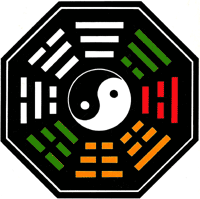


passwordprotected
Brief History About Poomse
W.T.F. uses Poomses for patterns. Poomses originate from the book 'I Ching', a Chinese oracle. The I Ching has 64 hexagrams, a combination of two sets of three lines, closed or broken. The sets of three lines are called trigrams. The closed lines represent Yang, the open lines Yin. In the chinese language, the unity of Yin and Yang is called 'taich'i'. In the Korean language, the unity is called T'ae-guk. This explains the term Poomse Taeguk. The eight trigrams together are called Pal-gwe as in Poomse Palgwe.
Forms or Poomse in Korean language, are a series of defending and attacking movements performed against imaginary opponents in a set pattern. Through the practice of forms, students come to learn the applications of various techniques of Taekwondo. Forms serve a multi-dimensional role, aiding in development and refinement of coordination, balance, timing, breath control and rhythm, all of which are essential skills to the Taekwondo student.
W.T.F. uses Poomses for patterns. Poomses originate from the book 'I Ching', a Chinese oracle. The I Ching has 64 hexagrams, a combination of two sets of three lines, closed or broken. The sets of three lines are called trigrams. The closed lines represent Yang, the open lines Yin. In the chinese language, the unity of Yin and Yang is called 'taich'i'. In the Korean language, the unity is called T'ae-guk. This explains the term Poomse Taeguk. The eight trigrams together are called Pal-gwe as in Poomse Palgwe.
Forms or Poomse in Korean language, are a series of defending and attacking movements performed against imaginary opponents in a set pattern. Through the practice of forms, students come to learn the applications of various techniques of Taekwondo. Forms serve a multi-dimensional role, aiding in development and refinement of coordination, balance, timing, breath control and rhythm, all of which are essential skills to the Taekwondo student.


Webmaster: Tony Susac - taekwondo@susac.net - © Project Susac 2025- Susac's Taekwondo - All Rights Reserved


White Belts


Yellow Belts
Blue Belts



Red Belts
Cho Dan Bo
Black Belts

Password Protected Area
You are now loged in to our Password Protected section. This section is reserved to and accessable by our Club Members. As this section is a priveledge, please treat it with respect it deserves. Any missuse must be reported to taekwondo@susac.net






Susac's Taekwondo & Self Defence Academy